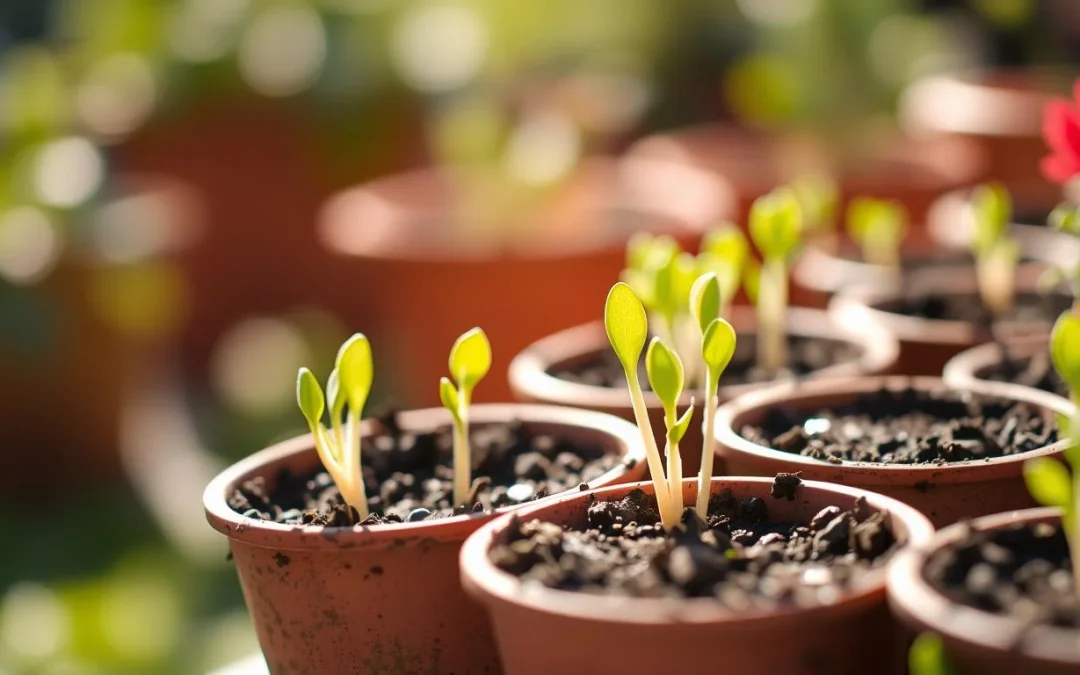Eucalyptus trees are known for their fragrant leaves and tall stature. They’ve been a favorite in gardens and homes for many years. The good news is, you can grow eucalyptus from seed, even in a small space. This guide will show you how to grow eucalyptus in pots, from seed to a beautiful plant.
Key Takeaways
- Starting eucalyptus from seed allows personal involvement in the growth process from stage one.
- Eucalyptus can thrive in pots with proper care, making it suitable for small spaces.
- Seed-grown eucalyptus trees bring satisfaction as they develop into mature plants.
- Potted eucalyptus trees are not only attractive but also offer aromatic benefits for the home.
- Choosing the right seed and pot can enhance the overall success of your eucalyptus cultivation.
Table of Contents
Understanding the Eucalyptus Plant
The eucalyptus plant is known for its lush, aromatic leaves and fast growth. It comes from Australia’s diverse lands. This plant has thrived for centuries in different climates, making it a favorite among gardeners.
Origins and Characteristics
The eucalyptus plant is more than just a medicinal plant. Its fast growth and unique features like peeling bark and lance-shaped leaves make it special. These traits help it survive in various environments and add beauty to gardens.
Benefits of Growing Eucalyptus
Growing a eucalyptus plant is more than just for looks. Its leaves are known for their strong essential oils, used in aromatherapy to improve health. Also, eucalyptus trees keep insects away, making them great for natural pest control.
Moreover, growing eucalyptus in pots helps purify the air. The plant’s leaves release compounds that clean the air, improving indoor quality.
| Benefits | Description |
|---|---|
| Aromatherapy | Eucalyptus oil extracted from the leaves is used to relieve stress and respiratory issues. |
| Insect Repellent | Natural oils in eucalyptus leaves help keep mosquitoes and other pests at bay. |
| Air Purification | Emits compounds that purify the air, improving indoor air quality significantly. |
Selecting the Right Eucalyptus Seeds
Starting with the right eucalyptus seeds is key for success, especially in small spaces. Different eucalyptus species vary in size, growth, and environmental needs. This means some are better for indoor or small-space gardening than others.
When picking eucalyptus seeds, think about the plant’s mature size, growth rate, and climate needs. For pots, consider varieties like Eucalyptus gunnii (cider gum) and Eucalyptus globulus (blue gum). They’re known for their compact size and beautiful leaves.
| Eucalyptus Species | Size Suitability for Pots | Growth Rate |
|---|---|---|
| Eucalyptus gunnii (Cider Gum) | Excellent | Fast |
| Eucalyptus globulus (Blue Gum) | Good | Moderate to Fast |
| Eucalyptus kruseana (Bookleaf Mallee) | Excellent | Slow to Moderate |
Make sure to buy seeds from trusted nurseries or suppliers. This ensures the seeds are healthy and will germinate well. Quality seeds are crucial for growing eucalyptus from seed, especially in new environments.
Also, think about the look of the eucalyptus plant you want. While all eucalyptus adds a unique touch, some have special leaves, bark, or flowers. These features can enhance your indoor or garden space.
Get more information about Growing Crops:
- ????Garlic Growing
- ????Grass seed to Grow
Preparing Your Pots for Eucalyptus Seeds
Gardeners growing eucalyptus in pots must pick the right container and soil. A good pot is key for healthy eucalyptus plants. These early choices are very important.
Choosing the Perfect Pot
Choosing the right pot for eucalyptus is about looks and function. It should be big enough for the plant’s growth and roots. Big ceramic or terracotta pots are best because they are heavy and let air reach the roots.
Soil and Drainage Essentials
Eucalyptus needs soil that drains well and lets air in. The soil should not hold too much water to avoid root rot. A mix of peat, perlite, and sand is good because it’s light and drains well. Also, make sure the pot has holes for water to drain out.
| Pot Material | Benefits | Drawbacks |
|---|---|---|
| Ceramic | Sturdy, maintains moisture balance | Heavy, more fragile |
| Plastic | Lightweight, affordable | Less breathable, can degrade |
| Terracotta | Highly breathable, excellent for dry environments | Heavy, requires more frequent watering |
Best Practices for Sowing Eucalyptus Seeds
Starting to grow eucalyptus from seed requires careful sowing. Handling seeds right and controlling the environment are key. These steps can greatly affect how well these trees grow.
Sowing Depth and Spacing
For the best germination, plant seeds shallowly. Aim for a depth that’s twice their size, about 1-2 millimeters. Spread seeds out to avoid overcrowding. This lets each seedling grow strong roots.
Optimal Environmental Conditions for Germination
Eucalyptus seeds do well in warm, moist conditions. Aim for a temperature of 65 to 75 degrees Fahrenheit for the best results. Keeping the soil moist is important, but too much water can harm the seeds.
Here are some tips for the right conditions:
- Keep the soil moist but not too wet.
- Use a greenhouse or plastic cover to keep humidity and warmth in.
- Place seeds in a spot with indirect but bright light.
Being patient and persistent is crucial when growing eucalyptus seeds. Follow these tips, and your seeds will grow into strong plants. They will show off the beauty and benefits of these trees.
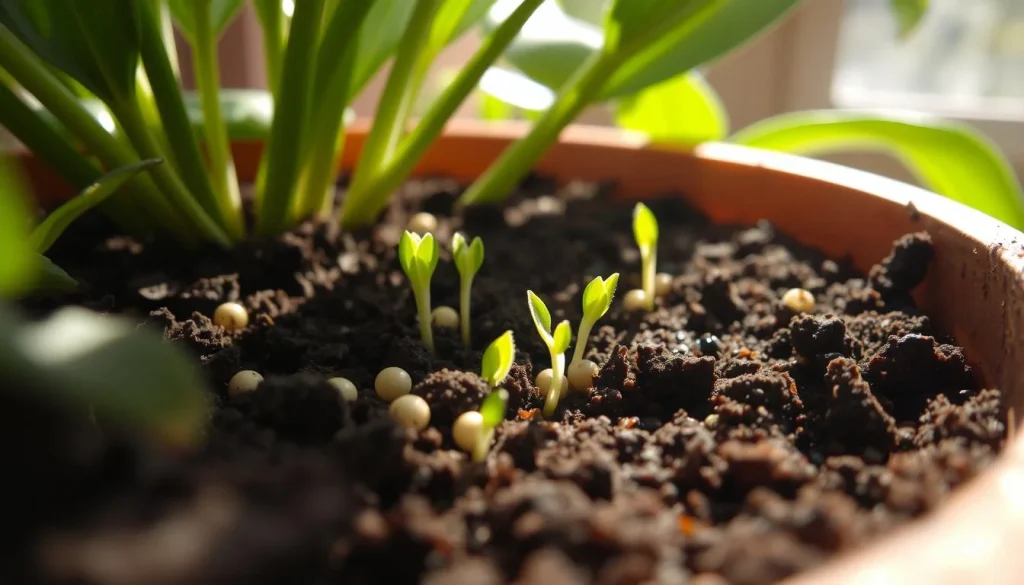
“Close-up view of eucalyptus seeds nestled in rich, dark potting soil, with delicate green seedlings emerging, surrounded by soft sunlight filtering through leaves, showcasing the early stages of germination in a peaceful indoor garden setting.”
How to Care for Eucalyptus Seedlings
Caring for eucalyptus seedlings is key to growing a healthy eucalyptus plant. These early days need careful attention to help your young plants grow strong and thrive.
Watering is crucial for eucalyptus seedlings. The soil should be moist but not too wet. Too much water can cause root rot, a common problem. On the other hand, not enough water can make them dehydrated and slow their growth.
Light is also important for eucalyptus seedlings. They prefer bright, indirect sunlight. Too much direct sun can burn their leaves. Not enough light can make them grow weak and long.
Keeping the temperature right is also vital. Eucalyptus seedlings do best in temperatures between 60-80°F (15-27°C). It’s important to keep them away from sudden changes in temperature to avoid stress and damage.
- Regular monitoring: Check your eucalyptus seedlings daily to adjust care routines as needed.
- Gradual hardening off: Before moving them outdoors permanently, gradually acclimate your seedlings to outdoor conditions to prevent shock.
- Fertilization: Begin to fertilize with a diluted solution once the seedlings have established their first set of true leaves, promoting healthier growth.
By following these tips, you can give your eucalyptus plant the best start. This will help it grow into a healthy and strong tree.
Growing Eucalyptus in Pots
Many people are now growing eucalyptus in pots. This lets them use their space better and control the growing conditions. We’ll cover the key points of pot size, soil, fertilization, and watering. This will help your potted eucalyptus thrive.
The Importance of Pot Size
Choosing the right pot size is key for growing eucalyptus in pots. A small pot can limit root growth, causing the plant to grow slowly. On the other hand, a too-large pot can lead to waterlogged soil and root rot. As your eucalyptus grows, you’ll need to move it to a bigger pot to support its roots.
Fertilization and Watering Requirements
Fertilizing your eucalyptus is important for its health and growth. Use a balanced fertilizer with nitrogen, phosphorus, and potassium during the growing season. The amount and frequency of fertilizing depend on your eucalyptus’s growth stage and soil quality.
Watering your eucalyptus correctly is also crucial. It likes moist soil but needs good drainage to avoid waterlogging. Adjust your watering based on the season, the plant’s stage, and the environment’s humidity and temperature.
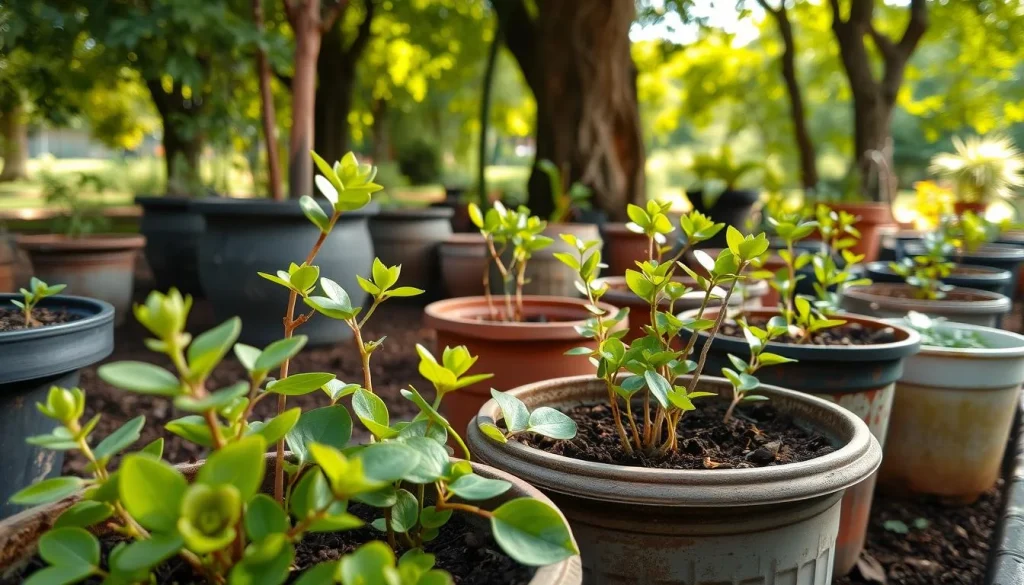
A serene garden scene featuring multiple pots with young eucalyptus seedlings, vibrant green leaves, rich soil, and soft sunlight filtering through trees, showcasing a variety of pot designs and textures, with a gentle breeze creating movement in the leaves.
| Pot Size (inches) | Plant Stage | Watering Frequency | Recommended Fertilizer |
|---|---|---|---|
| 8–10 | Seedling | Weekly | High-nitrogen blend |
| 12-15 | Young Plant | Every 5 days | Balanced NPK |
| 18-24 | Mature Plant | Twice a week | Low-nitrogen, high-potassium |
Following these guidelines for pot size, fertilization, and watering will help your eucalyptus thrive. This will make your plant a beautiful centerpiece in your home or garden.
Potting and Repotting Eucalyptus Plants
To grow eucalyptus trees in pots well, you need to know how to pot and repot them right. These steps help your eucalyptus not just survive but flourish. Here’s a detailed guide on potting young eucalyptus plants and knowing when to repot them.
When potting young eucalyptus, pick a pot that’s a bit bigger than the root ball. A pot 2-3 inches wider is perfect. This extra space helps roots grow and prevents soil from getting too tight, which can harm drainage and air.
Watching your eucalyptus grow is key to knowing when to repot. Look for signs like roots circling the pot or coming out of the holes. If your plant grows slow or needs water more often, it’s time for a bigger pot.
| Indicator | Significance |
|---|---|
| Roots circling the interior | Roots need more space to expand, indicating a larger pot is necessary. |
| Roots through drainage holes | Immediate repotting needed to prevent root strangulation and health issues. |
| Slowed growth | Possible root binding within the current pot, suggesting a need for transfer. |
| Increase in watering needs | Soil drying out faster due to insufficient room for moisture retention. |
When you repot growing eucalyptus trees in pots, choose a pot 20-25% bigger than the old one. This size lets roots grow without too much water. Use fresh potting mix and keep the plant at the same depth to avoid stress.
By watching closely and using the right potting methods, you’ll do great with growing eucalyptus in pots.
Can a Rainbow Eucalyptus Grow Indoors?
Many people are curious about growing a rainbow eucalyptus indoors. Its striking bark and fast growth make it appealing. To grow one indoors, you need to create the right environment. This includes the right lighting, humidity, and space.
Understanding Rainbow Eucalyptus Needs
The rainbow eucalyptus comes from the Philippines and loves moist, sunny places. It needs a lot of moisture and lots of sunlight. Growing it indoors is challenging because of these specific needs.
Creating an Indoor Eucalyptus-friendly Environment
To make your home a good place for a rainbow eucalyptus, focus on a few key things. Here’s what you need to think about:
- Light: Place the plant where it gets six to eight hours of bright, indirect sunlight every day.
- Humidity: This plant likes very humid air, like in tropical forests. Use humidifiers or water trays to keep the air moist.
- Space: Since it can grow up to three feet a year, it needs plenty of room to grow without stress.
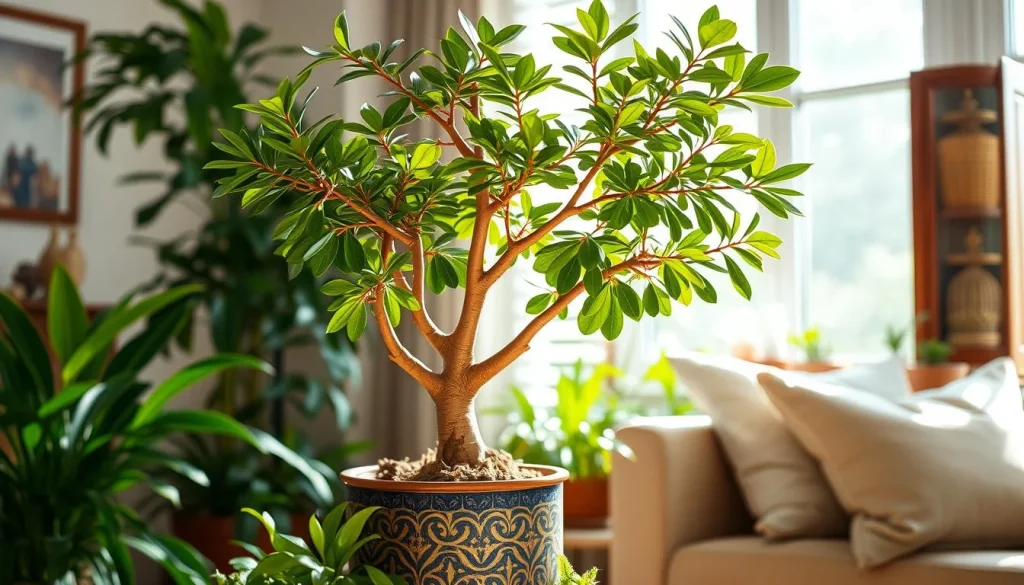
A vibrant indoor scene featuring a Rainbow Eucalyptus sapling in a decorative pot, surrounded by lush green plants, soft natural light streaming through a window, highlighting the tree’s colorful bark and foliage, a cozy living room atmosphere with tasteful decor elements.
| Condition | Indoors | Outdoors |
|---|---|---|
| Sunlight | Indirect, bright light | Direct sunlight |
| Humidity | High, artificially maintained | Naturally high |
| Space | Limited, requires management | Expansive |
While growing a rainbow eucalyptus indoors might seem hard, it’s doable with the right knowledge. It’s a great challenge for indoor gardening. It also lets you grow more exotic plants at home.
Tips for Growing Eucalyptus Trees in Pots
To grow eucalyptus in pots, follow some key steps. Pruning, regular care, and watching for pests and diseases are crucial. These tips will help keep your eucalyptus healthy and thriving in a pot.
Pruning and Maintenance
Pruning is key to keep your eucalyptus plant in check and strong. Start by cutting off any damaged or sick branches to stop infections. Prune during the plant’s dormant season to avoid stressing it out.
Also, make sure the soil is always moist but not too wet. This is part of regular care.
Managing Pests and Diseases
Eucalyptus plants can get pests and diseases, especially in damp or crowded spots. Look out for eucalyptus gall wasp, eucalyptus leaf beetle, and fungal infections like root rot. Catching these early is important.
Use natural pesticides and fungicides. Make sure they’re safe for potted plants.
| Pruning Season | Technique | Disease/Pest | Treatment |
|---|---|---|---|
| Winter (Dormant) | Cut back 1/3 of old growth | Eucalyptus Gall Wasp | Apply systemic insecticide |
| Early Spring | Thin out crowded areas | Leaf Beetle | Neem oil spray |
| As Needed | Remove damaged limbs | Root Rot | Improve drainage; reduce watering |
Following these simple steps can greatly improve your eucalyptus plant’s health. Regular pruning and pest control will protect it from diseases and pests. This will help your plant grow well and look great in a pot.
Possible Challenges in Growing Eucalyptus Indoors
While growing eucalyptus indoors can add a touch of nature to your home, it comes with challenges. These include environmental conditions and space limitations. Each can affect the plant’s health and growth.
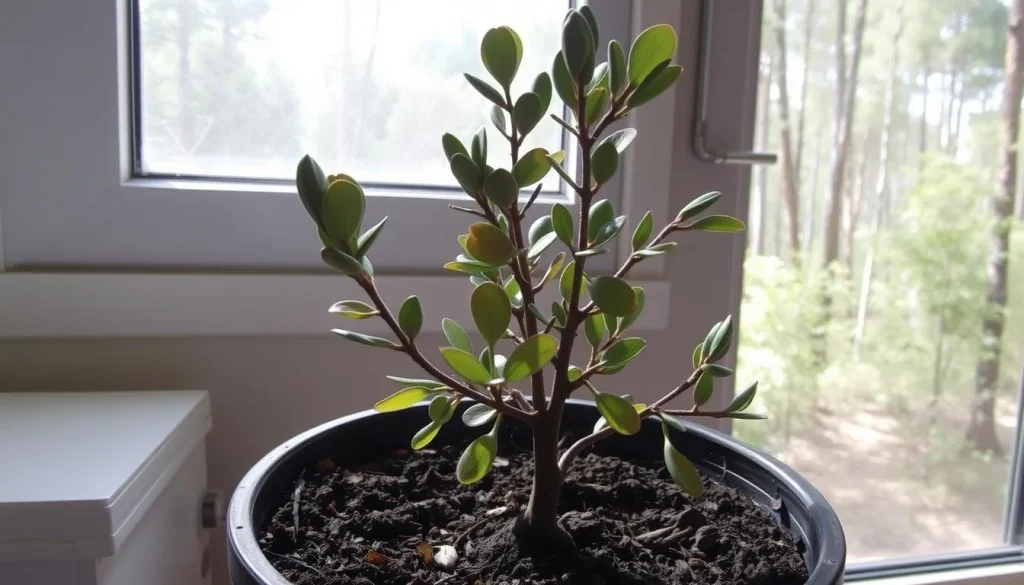
A struggling indoor eucalyptus plant in a pot, surrounded by dry soil and yellowing leaves, with a window showing limited sunlight, contrasting with a vibrant outdoor forest scene in the background, highlighting the challenges of indoor growth.
It’s important to make sure your eucalyptus gets enough light. These plants love bright, unfiltered sunlight. But indoor light often can’t match the sun’s intensity, which can slow growth. Space is also a problem, especially for tall eucalyptus species. Plus, keeping the right humidity indoors can be hard but is key for the plant’s health.
- Light Exposure: Eucalyptus plants thrive under full sun, necessitating a location near windows that receive ample daylight or the use of grow lights.
- Space for Growth: Regular pruning is essential to manage height and spread, making it suitable for indoor environments.
- Humidity Requirements: Using humidifiers or placing water trays near the plant can help maintain an optimal humidity level.
| Challenge | Description | Solutions |
|---|---|---|
| Light | Inadequate sunlight for photosynthesis and growth | Position near south-facing windows or use artificial grow lights |
| Space | Potential to outgrow indoor spaces without proper management | Prune regularly to control size; select dwarf varieties if possible |
| Humidity | Natural humidity levels indoors often too low for eucalyptus | Utilize humidifiers or shallow water trays near the plant |
While growing eucalyptus indoors has its challenges, it’s doable with the right care. Knowing your eucalyptus’s specific needs will help it thrive in your home.
Growing Eucalyptus
Potted eucalyptus plants are great for both looks and function. They’re perfect for those who love eucalyptus aromatherapy and decoration. This part will cover the basics of caring for these plants at home.
Cultivating Eucalyptus for Aromatherapy and Decoration
Eucalyptus plants are loved for their bright leaves and scent. They also make spaces look better. To keep them healthy, water them often, give them lots of sunlight, and use soil that drains well.
The smell of eucalyptus is calming and clean. It’s a popular choice for those who want a natural, peaceful home.
Harvesting Eucalyptus Leaves
Harvesting eucalyptus leaves the right way keeps your plant healthy. It’s best to pick leaves in the morning when they smell the strongest. Use sharp, clean shears to cut off older leaves, but don’t take too much.
This way, your plant will keep growing. You’ll always have leaves for your crafts, decorations, or to freshen up your home.
Conclusion
Starting a eucalyptus growth journey in pots is fun and rewarding for all gardeners. We’ve covered everything from picking the right seeds to caring for your plant. Now, you’re ready to grow a lush eucalyptus at home or in your garden.
Seeing these tall trees grow from small seeds is truly special. With the right soil, understanding your plant’s needs, and knowing how to care for your pot, you can succeed. As your eucalyptus grows, so will your gardening skills, making you appreciate these plants even more.
If you want to use the leaves for their scent or add beauty to your space, this guide helps. Remember, growing eucalyptus in pots needs patience and care. Now, it’s time to put what you’ve learned into action and watch your seedling become a beautiful tree in your pot!
FAQ
How do I start growing eucalyptus from seed in pots?
Start by picking a pot with good drainage. Use a soil mix made for eucalyptus. Plant the seeds at the right depth. Make sure the environment is stable and has enough light for germination.
What are the benefits of growing eucalyptus in pots?
Growing eucalyptus in pots has many benefits. It can purify the air and repel insects. It also adds a fresh scent for decoration and aromatherapy. Plus, it’s great for both indoor and outdoor spaces.
Can eucalyptus be grown indoors?
Yes, eucalyptus can thrive indoors. Just make sure it gets enough sunlight, humidity, and space. Some types, like rainbow eucalyptus, need extra care.
What is the best soil mix for potted eucalyptus plants?
For potted eucalyptus, use a mix that drains well and is rich in nutrients. A blend of potting soil, sand, and peat works well.
When should the eucalyptus seeds be sown and what is the ideal germination temperature?
Plant eucalyptus seeds in late winter or early spring. The best temperature for germination is 65°F to 70°F (18°C to 21°C).
How do I care for eucalyptus seedlings?
Eucalyptus seedlings need consistent watering and lots of sunlight. Protect them from extreme temperatures. If moving them outside, acclimate them slowly.
What are the potting and repotting requirements for eucalyptus?
Choose a large pot with good drainage for eucalyptus. Repot when it outgrows its current home, usually every couple of years or when roots appear in the drainage holes.
How often should I water and fertilize potted eucalyptus plants?
Water eucalyptus when the top inch of soil feels dry. Fertilize with a balanced, slow-release fertilizer every six to eight weeks during the growing season.
Can a rainbow eucalyptus grow indoors and what are its specific needs?
Rainbow eucalyptus can grow indoors, but with caution. It needs high humidity, lots of light, and plenty of space for its fast growth.
How do I prune and maintain my eucalyptus grown in pots?
Prune your eucalyptus in late winter or early spring. This keeps it manageable. Remove dead or diseased branches and check for pests and diseases regularly.
What should I do if I notice pests or diseases on my eucalyptus plant?
If you spot pests or diseases, identify them and treat them with neem oil, insecticidal soap, or fungicides. Keep your plant clean and isolate sick plants to stop the spread.
What challenges might I face when growing eucalyptus indoors?
Growing eucalyptus indoors can be tricky. You’ll need to ensure enough light, manage its size, and keep humidity levels right. Use a south-facing window, a humidifier, and regular pruning to overcome these challenges.
How do I harvest eucalyptus leaves for aromatherapy and decoration?
Harvest eucalyptus leaves in the morning when the oil is most concentrated. Choose healthy stems, cut at a 45-degree angle, and let the plant recover between harvests.
-

Today Cotton Rate in Pakistan 2025 | Phutti Rate Today
-
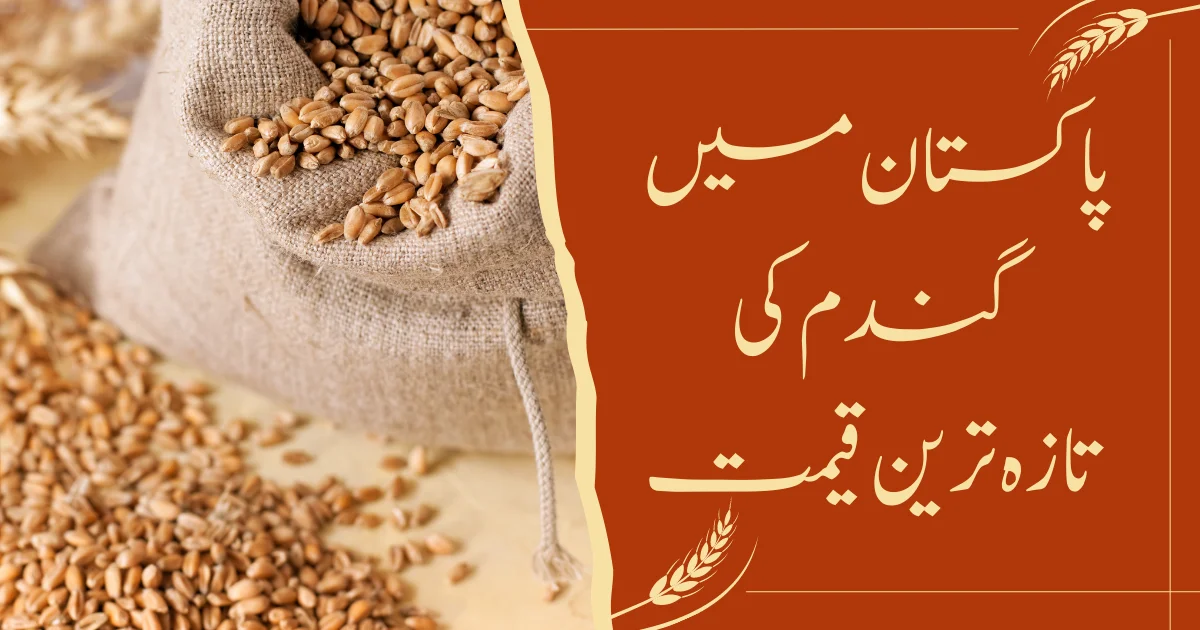
Today Wheat Rate in Pakistan 2025
-
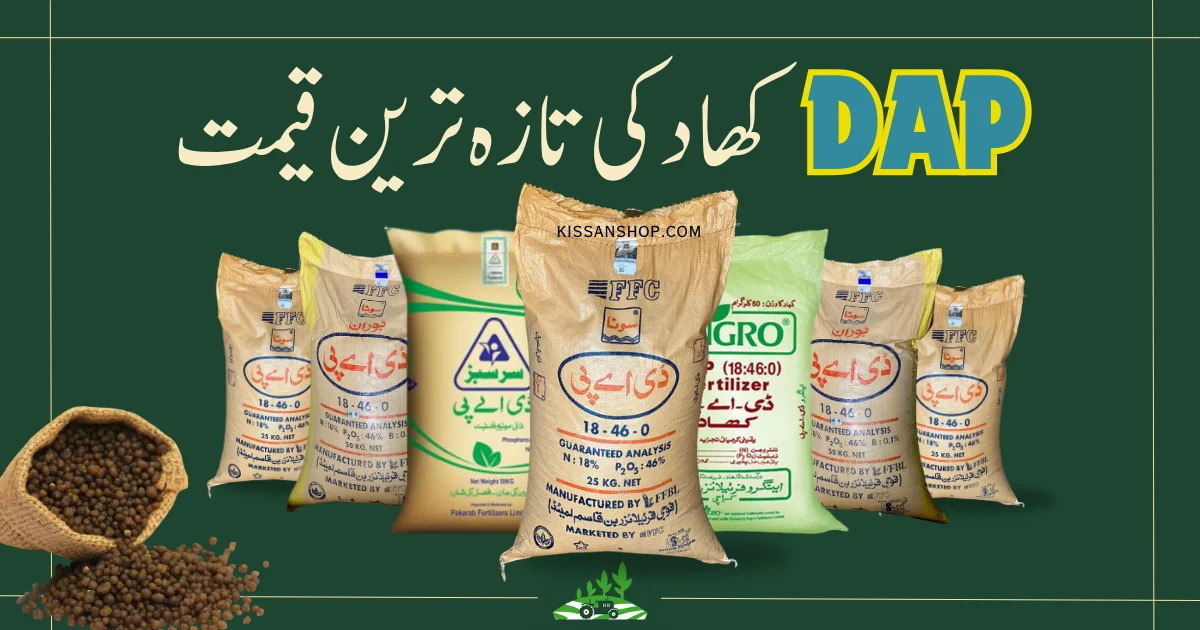
DAP Price in Pakistan 2025 | Sona, Engro, Sarsabz
-
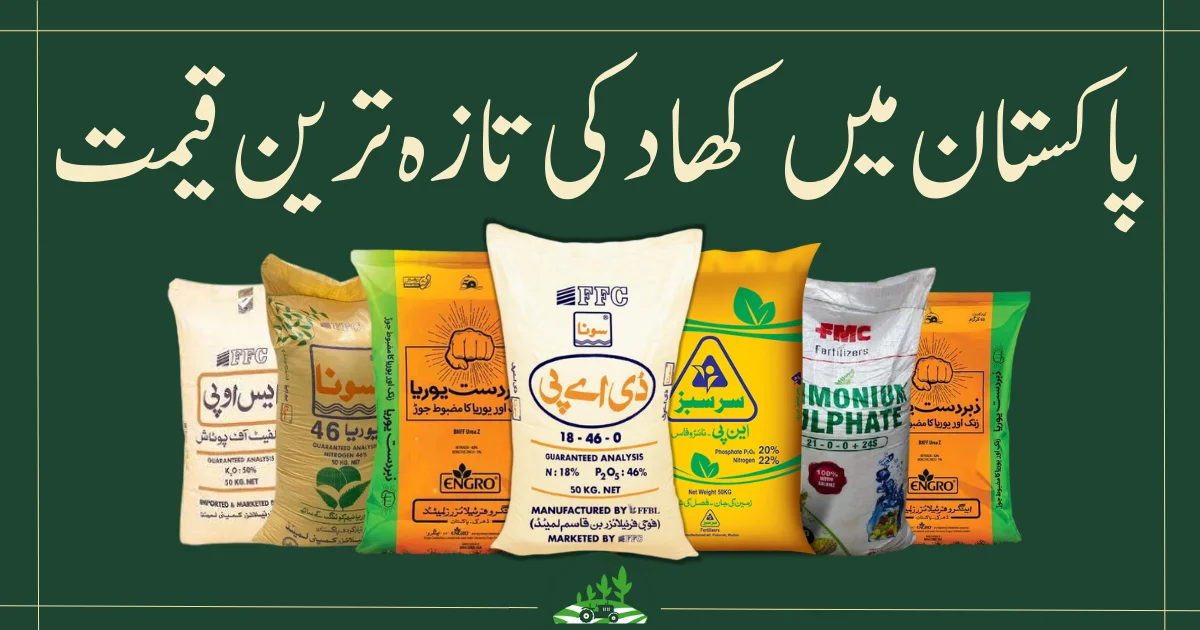
Fertilizer price in Pakistan 2025 | DAP, Urea, NP Fertilizer

